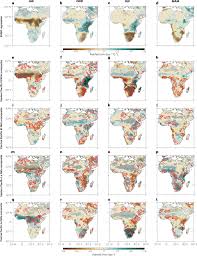Global climate monitoring agencies report that El Niño-Southern Oscillation (ENSO) Neutral conditions continue to dominate worldwide, maintaining a stable climate pattern without the intensified warming of El Niño or the cooling of La Niña. Despite the neutral status, certain regions are experiencing notable climate anomalies, particularly in Tropical Africa.
Localized Dryness in Tropical Africa
Meteorologists highlight that parts of Tropical Africa are facing abnormal dryness, leading to increased concerns over water scarcity, agriculture, and food security. Crops in several regions are reportedly under stress, prompting farmers to implement water-conservation strategies as rainfall deficits persist.
“ENSO-neutral doesn’t mean climate is uniform or normal everywhere,” explained Dr. Samuel Ochieng, a climate scientist. “Localized impacts, like droughts or heatwaves, can still occur even in the absence of a strong El Niño or La Niña event.”
Global ENSO-Neutral Influence
The current ENSO-neutral period continues to influence global weather patterns, keeping tropical Pacific sea surface temperatures near long-term averages. While this stability avoids some of the extreme disruptions seen during strong ENSO phases, regions dependent on seasonal rainfall remain vulnerable to anomalies.
Monitoring and Preparedness
Climate experts emphasize the importance of monitoring and preparedness, particularly for regions like Tropical Africa, where agriculture and livelihoods are highly sensitive to shifts in precipitation. ENSO-neutral conditions may persist for several more months, but localized impacts will continue to require careful attention from governments and communities.

